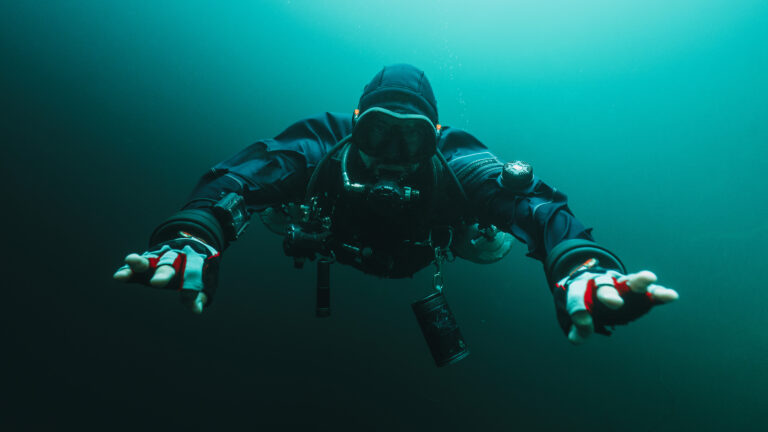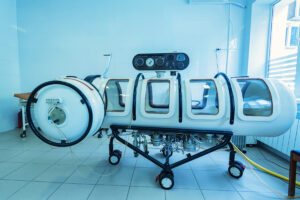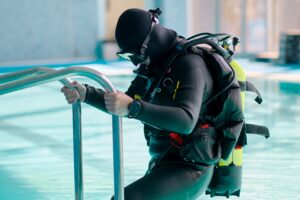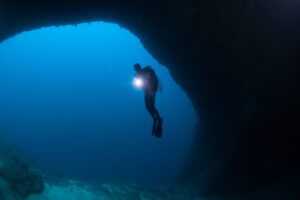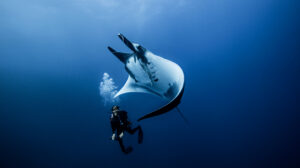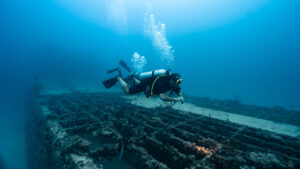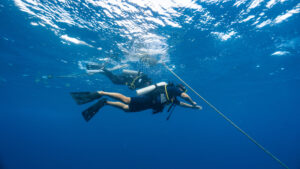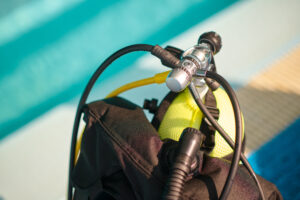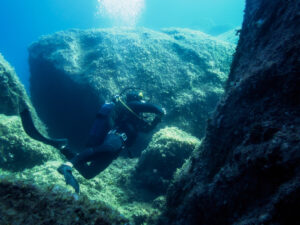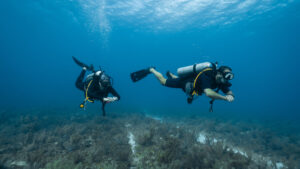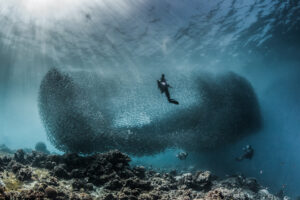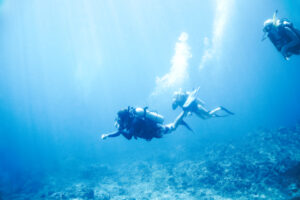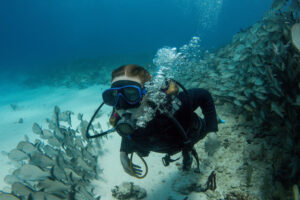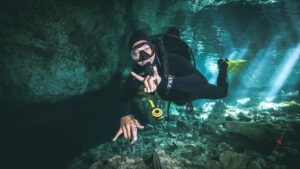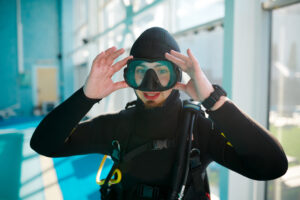What is an Adjusted No Decompression Limit in Scuba Diving?
Scuba diving, an enchanting world of vibrant marine life and mesmerizing underwater topography, involves a blend of adventure and science. To ensure divers’ safety, the principles of physics and physiology are paramount. The “Adjusted No Decompression Limit” is one such essential concept every scuba enthusiast must understand.
Definition and Importance
Understanding the Adjusted No Decompression Limit
Adjusted No Decompression Limit (ANDL) is a time calculation used in scuba diving to manage a diver’s exposure to nitrogen during repetitive dives. Essentially, it’s the adjusted maximum duration that divers can stay at a certain depth without needing decompression stops during their ascent. This time limit is influenced by the residual nitrogen accumulated in the diver’s body from previous dives.
Why the Adjusted No Decompression Limit is Crucial
Nitrogen, an inert gas under normal conditions, becomes a critical concern underwater. Due to the increased pressure while diving, nitrogen from the breathing gas dissolves in the diver’s tissues. It’s harmless while beneath the waves, but ascension can cause this nitrogen to form bubbles if not properly managed, leading to decompression sickness (DCS), a serious medical condition.
The ANDL is designed to keep divers within the safe limits of nitrogen absorption, helping avoid DCS while optimizing the time they can spend underwater. Understanding ANDLs can improve dive planning and ensure a safer, more enjoyable diving experience.
Calculation of the Adjusted No Decompression Limit
Basis for Calculating the ANDL
The first dive of the day has a specified No Decompression Limit (NDL), based on the planned depth of the dive. However, for subsequent dives, the NDL must be adjusted to account for the residual nitrogen from previous dives, leading to the Adjusted No Decompression Limit.
The ANDL is calculated using dive tables or dive computers. It involves determining the pressure group at the end of a dive, accounting for the surface interval, and then finding the new pressure group that guides the ANDL for the next dive.
Role of Dive Tables and Computers
Dive tables, such as the U.S. Navy dive tables, or Bühlmann tables, provide guidance to calculate ANDL. They use a series of pressure groups labeled from A to Z, with each group representing a range of residual nitrogen amounts.
After a dive, the diver determines their pressure group based on the dive’s depth and duration. The longer and deeper the dive, the higher the pressure group. After a surface interval, the diver “descends” the table to a lower pressure group reflecting the off-gassing that occurs during the rest period. For the next dive, this pressure group is the starting point, and the diver calculates their new ANDL accordingly.
Dive computers automate these calculations, constantly tracking nitrogen levels and providing real-time ANDLs. They offer personalized calculations based on the diver’s actual depth and time profile, making them a preferred option for many divers.
Understanding Residual Nitrogen
What is Residual Nitrogen?
Residual nitrogen is the amount of nitrogen gas that remains dissolved in the diver’s tissues after a dive. Despite off-gassing on the surface between dives, a diver will still retain some nitrogen. The amount of residual nitrogen is a function of the depth and duration of the previous dive, with longer and deeper dives leading to greater quantities of residual nitrogen.
Impact of Residual Nitrogen on Diving
The presence of residual nitrogen has significant implications on dive planning and safety. When planning for repetitive dives, the diver must account for this gas. Residual nitrogen reduces the amount of time the diver can safely spend at depth on subsequent dives, hence the need for ANDL calculations.
If the residual nitrogen is not adequately considered, the diver may exceed safe nitrogen limits and potentially experience DCS symptoms. Therefore, understanding and managing residual nitrogen is an essential part of any diver’s toolkit.
Factors Influencing Adjusted No Decompression Limit
Depth and Duration of Previous Dives
The depth and duration of a diver’s previous dives significantly affect the ANDL. The deeper and longer the dive, the more nitrogen accumulates in the tissues. Consequently, the next dive’s ANDL will be shorter due to the increased need to off-gas this residual nitrogen.
Surface Interval
The surface interval, the time spent on the surface between dives, impacts the ANDL. During this period, the body off-gases, reducing the amount of residual nitrogen. A longer surface interval allows for more off-gassing, leading to a longer ANDL for the next dive.
Individual Factors
Several individual factors, such as age, fitness level, body fat content, and overall health, can influence the ANDL. These factors impact a person’s ability to on-gas and off-gas nitrogen. For instance, higher body fat content can prolong off-gassing, potentially reducing the ANDL. Divers should consult with a diving professional or medical expert to understand how these factors might affect their ANDL.
Managing the Adjusted No Decompression Limit
Proper Planning
Proper dive planning is crucial in managing the ANDL. This involves using dive tables or computers to calculate ANDL accurately. Divers should plan their dives considering their ANDL, avoiding any impromptu changes in depth or duration that might compromise their nitrogen levels.
Incremental Descent
Divers can manage the ANDL by using an incremental descent strategy, which involves planning the deepest dive first. This approach ensures that residual nitrogen levels are lowest for the deepest dive, reducing the risk of DCS. Subsequent dives are shallower, requiring less time to off-gas residual nitrogen and ensuring a safe ANDL.
Regular Checks
Regularly checking dive computers or tables during a dive can help manage the ANDL effectively. It allows divers to monitor their nitrogen exposure in real-time, making necessary adjustments to their dive profile to stay within the safe limits.
The Adjusted No Decompression Limit is more than a concept or a calculation; it’s a commitment to safety and enjoyment in the underwater realm. By understanding and managing the ANDL effectively, divers can explore the depths with the confidence that they’re diving within safe limits, promoting both their safety and the sustainability of the sport.
Decompression Sickness and the Role of ANDL
Decompression Sickness: A Brief Overview
Decompression sickness (DCS), colloquially known as “the bends,” is a potentially serious condition that can occur when a diver ascends too quickly or without properly managing their nitrogen levels. When divers ascend, the pressure surrounding their bodies decreases. If there’s too much nitrogen in their tissues, this pressure reduction can cause the nitrogen to form harmful bubbles.
Symptoms of DCS can vary widely, from mild joint pain and skin rashes to severe neurological or cardiovascular complications. DCS is a significant risk factor in diving, making the understanding and application of concepts like ANDL vital to a diver’s safety.
The Role of ANDL in Preventing DCS
The Adjusted No Decompression Limit is integral in preventing decompression sickness. By providing a time limit that accounts for both the depth of a dive and the residual nitrogen from previous dives, the ANDL enables divers to stay within safe nitrogen exposure limits. Abiding by their ANDL reduces divers’ risk of developing DCS and promotes a safer diving experience.
Safety Procedures and Precautions
Adherence to ANDL Guidelines
For safe diving practices, adherence to the ANDL is paramount. Divers should ensure that they do not exceed their ANDL under any circumstances. In cases where the ANDL might be accidentally surpassed, divers should carry out emergency decompression procedures as recommended by their training agency.
Regular Servicing of Equipment
Dive computers play an integral role in calculating and managing the ANDL. Therefore, ensuring these devices are serviced regularly and function accurately is essential. A malfunctioning dive computer can provide incorrect data, leading to unsafe diving practices and increased DCS risk.
Continuous Education and Training
Continuous education and training in diving are critical for managing the ANDL and overall dive safety. Diving science and technology are continually advancing, and staying up-to-date with these changes can help divers adapt their practices, improving safety and enjoyment.
The Adjusted No Decompression Limit is a cornerstone of safe and responsible diving. It is a reflection of the synergy between diving and science – a guideline that allows us to explore the underwater world while respecting the physical boundaries of our bodies. As divers, we must strive to understand and adhere to this principle, enhancing not just our safety but also the exhilarating experience of discovering the world beneath the waves.
Advanced Considerations in ANDL
Diving at Altitude and ANDL
Diving at altitude presents unique considerations for calculating the Adjusted No Decompression Limit. Since atmospheric pressure is lower at higher elevations, the body off-gases more slowly, affecting residual nitrogen and thus the ANDL. Dive tables and computers designed for sea level will not provide accurate ANDLs for altitude diving. Divers should use altitude-adjusted tables or set their dive computers to altitude mode to ensure accurate ANDL calculations.
Technical Diving and ANDL
In technical diving, where divers go beyond recreational dive limits, managing ANDL becomes more complex. Technical divers often use different gas mixes and engage in mandatory decompression stops, requiring specialized training and equipment to calculate and manage their ANDL.
Future Developments
Technological Advances
The future of ANDL management lies in technological advancements. Modern dive computers have already revolutionized the way divers calculate ANDL, offering real-time monitoring and adjusting for variations in depth and time. Future innovations may include even more accurate models of nitrogen absorption and elimination, further enhancing dive safety.
Scientific Research
Ongoing scientific research continues to improve our understanding of decompression theory and how the body responds to changes in pressure. These insights will refine the calculations for ANDL, making them more individualized and accurate. Such advancements promise an even safer and more enjoyable future for the world of diving.
Understanding and managing the Adjusted No Decompression Limit is an essential part of scuba diving. This safety measure, borne out of our evolving understanding of physics and human physiology, enables divers to explore the undersea world with confidence. As technology and science progress, so too will our ability to dive deeper, stay longer, and ensure every diver’s safety. By adhering to these principles, divers everywhere can continue to marvel at the wonders of the ocean, unlocking mysteries that lie beneath the waves.
The Human Element in ANDL
Personal Responsibility
Despite advances in technology and science, the responsibility for managing the Adjusted No Decompression Limit ultimately rests with the diver. Each individual diver must comprehend their ANDL, plan their dives accordingly, and monitor their depth and time underwater. By embracing this responsibility, divers can maintain their own safety and that of their dive buddies.
The Role of Dive Professionals
Dive professionals play a pivotal role in guiding divers to understand and manage their ANDL. Through education and training, they impart the knowledge and skills needed to safely navigate the underwater environment. They set the example, demonstrating the importance of safe diving practices and fostering a culture of safety within the diving community.
Empowering Divers Through Knowledge
Ultimately, understanding ANDL empowers divers. With this knowledge, divers can plan and execute dives that maximize their underwater exploration while maintaining their safety. They can confidently respond to changes or unexpected events during a dive, secure in the knowledge that they understand their body’s limits in the underwater environment.
The Adjusted No Decompression Limit is a testament to the power of science and education in enhancing our experiences. By understanding this essential concept, divers can immerse themselves in the wonders of the underwater world, confident in their ability to manage their safety. As we continue to explore the depths, this understanding will guide us, ensuring that we respect both the ocean and the inherent limits of our own physiology. As divers, our quest for exploration is balanced by our commitment to safety, and the Adjusted No Decompression Limit remains a key beacon in this ongoing journey.

